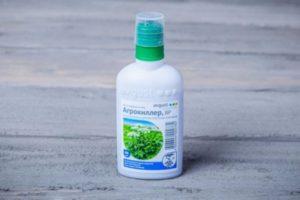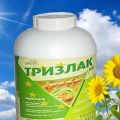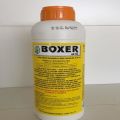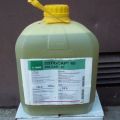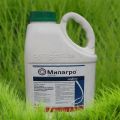Instructions for the use of the herbicide Paradox, consumption rates and analogues
It is difficult to grow a good crop without treating agricultural crops with herbicides. As a result of their destructive effect on weeds, plants receive more light, moisture, nutrients, develop faster, and form a crop more actively. The herbicide called "Paradox" is able to destroy weeds on crops of legumes and sunflowers. You should read the instructions for the use of the pesticide and follow all the regulations when working with the drug.
Content
- 1 Active ingredient, formulation and purpose of the drug "Paradox"
- 2 Spectrum and mechanism of action
- 3 Impact speed and symptoms
- 4 Protective period
- 5 Pros and cons of herbicide
- 6 Consumption measures for different plants
- 7 Preparation and application of the working solution
- 8 Toxicity degree
- 9 Compatibility with other products
- 10 Shelf life and storage conditions
- 11 Analogs
Active ingredient, formulation and purpose of the drug "Paradox"
The drug is based on imazamox. It belongs to the class of imidazolines. The amount of substance in the herbicide is 120 grams per liter. "Paradox" is produced in the form of a water-soluble concentrate. The substance is packaged in 5 liter plastic cans.
The pesticide belongs to the systemic and is intended for the destruction of a wide range of weeds on crops of peas, soybeans, rapeseed, sunflower.
Spectrum and mechanism of action
The herbicide "Paradox" has a detrimental effect on cereal plants of the annual development cycle, perennial weeds, dicotyledonous species. Among them:
- chicken millet;
- white gauze;
- cable car;
- field mustard;
- bristle;
- amaranth;
- sow thistle;
- sagebrush;
- wild oats;
- wheatgrass.
After spraying, the solution is absorbed by the leaf surface of the aerial part and by the roots of the weeds. As a result, the synthesis of amino acids stops, growth stops.
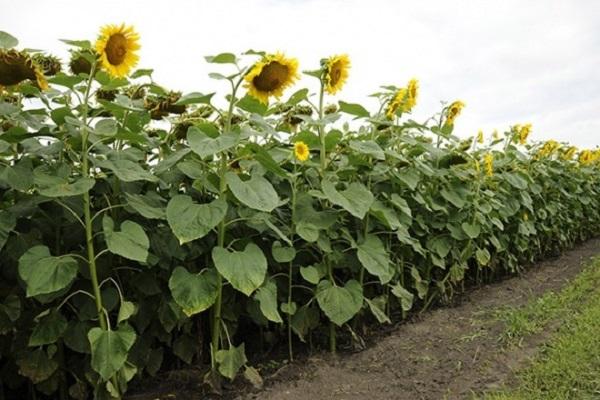
Impact speed and symptoms
The action of the drug "Paradox" comes very quickly. Blocking the formation of amino acids occurs within an hour after treatment, and after a week the changes become visually noticeable - the growth points turn brown or brighten. Later, chlorosis of the entire weed occurs, it dries up and dies.
Protective period
If the soil is sufficiently moist, the inhibitory effect of the Paradox herbicide lasts for at least a month. In addition, the chemical is active in the soil to inhibit the emergence of new weeds. Later, cultivated plants overtake them in growth, "drown out" and stop development.
If the soil is fertile, with a humus content of at least 6%, the drug decomposes quickly. The same effect is observed at elevated ambient and ground temperatures.
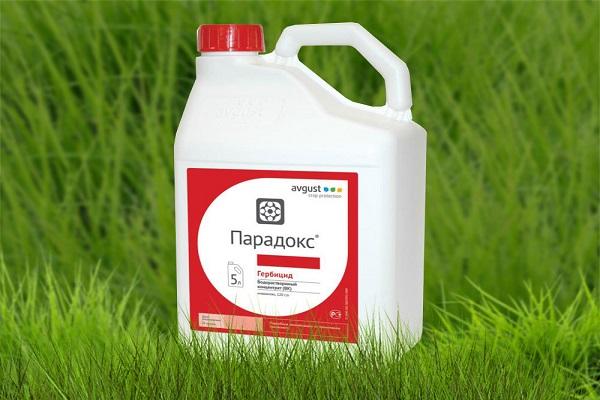
Pros and cons of herbicide
According to experts, "Paradox" has a number of advantages:
- the drug has a depressing effect on cereal and dicotyledonous weeds;
- the pesticide is able to stop the development of creeping wheatgrass;
- the herbicide enters the plant in two ways - through the roots and leaves;
- protection of crops from weeds lasts longer as a result of the activity of "Paradox" in the soil;
- use in tank mixes is possible;
- economical consumption due to the concentration of the "Paradox";
- high-tech form of the drug.
In addition to the positive aspects, the pesticide has disadvantages:
- Despite the resistance and tolerance of soybeans and peas to the herbicide "Paradox", after treatment may stop in their development, which is temporary and does not affect the yield.
- As a result of constant application of the herbicide, weeds can become addicted to it. Treatment with the "Paradox" should be alternated with spraying with other pesticides.
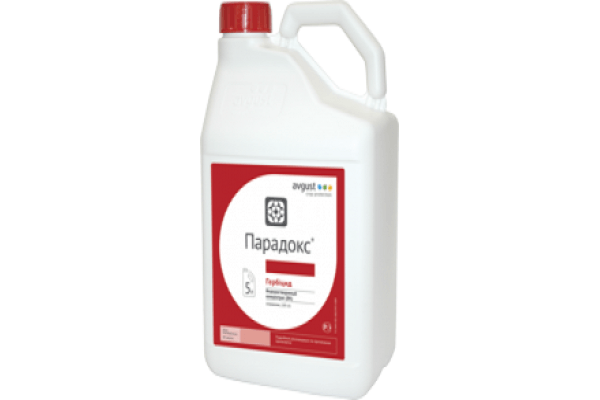
Consumption measures for different plants
According to the regulations for use, the drug is used as follows:
- when protecting peas and soybeans from cereal and dicotyledonous weeds - in the phase of 4 leaves of weeds and with 5 leaves in cultivated plants, the rate of application of the drug is 0.25-0.35 liters per hectare;
- for the destruction of weeds on rapeseed, sunflower sown for seeds and oil - at the stage of 2-4 leaves on weeds, 4-5 on agricultural crops at a rate of 0.3-0.4 liters per hectare.
Processing is carried out once. The consumption rate of the working substance is from 50 to 300 liters per hectare.
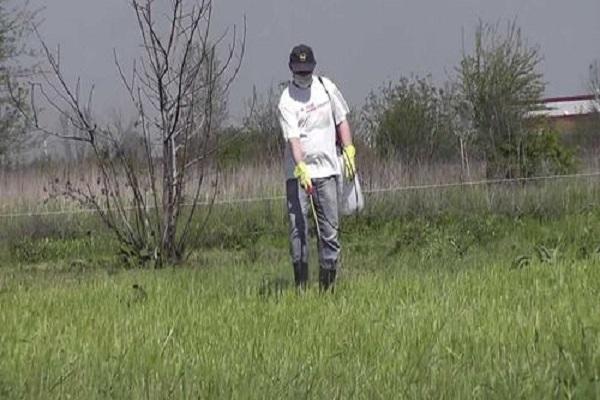
Preparation and application of the working solution
To prepare a working solution, you must perform a number of sequential actions:
- Fill the sprayer tank with water to 50% of its volume.
- Switch on the liquid stirring mode.
- Calculate and measure the required amount of herbicide "Paradox" according to the instructions.
- Add it to the tank.
- Continue stirring.
- Wash the canisters from under the chemical agent several times and pour the water into the sprayer.
- Add an adjuvant (surfactant) to enhance the herbicide's effectiveness.
Toxicity degree
The pesticide "Paradox" belongs to the third class of danger to humans and bees. It is allowed to be used by aerial processing. It is forbidden to use water bodies in water protection zones, near sources of drinking water and apiaries. The residents of nearby houses should be warned about the planned cultivation of crops. It is held in the morning or evening in the absence of strong wind and precipitation.

Compatibility with other products
To enhance the effect of "Paradox" on soybeans and peas, it is used together with the herbicide "Corsair". This combination improves the result of dicotyledonous weeds control. To expand the range of destroyed weeds on rapeseed hybrids, "Paradox" is mixed with the pesticide "Grader", using a surfactant for greater efficiency.
You can add components only after the previous ones are completely dissolved. Before creating a tank mix, a compatibility test of the components should be carried out.
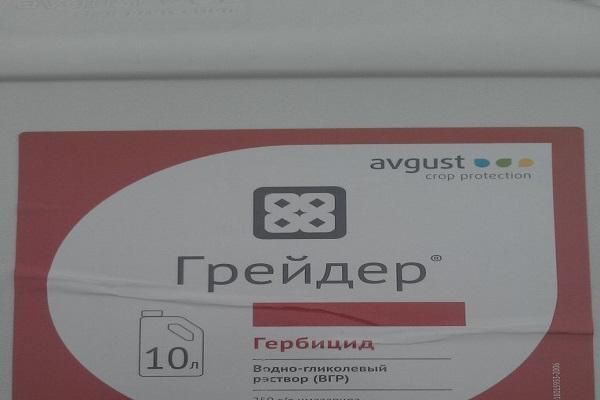
Shelf life and storage conditions
The storage of the herbicide "Paradox" is carried out in a dry room with good ventilation, away from animal feed and food. The drug should not be available to children and animals. An ambient temperature of -30 ⁰C to +35 ⁰C is suitable for it.
Can be stored in undamaged original packaging for 3 years from the date of manufacture. The standard label should include all the necessary information about the product.
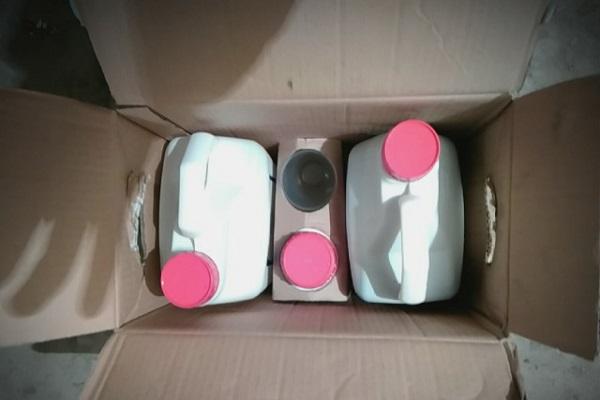
Analogs
Herbicides that have similar properties and the same active ingredient as "Paradox" include drugs:
- Global Plus;
- Juncker;
- "Zodiac";
- "Rodimich";
- "Zonator";
- "Pulsar";
- "Helot";
- "Metas";
- "Imazabel";
- "Kursar".
